How to Meditate Properly: Your Ultimate Meditation for Happiness Guide
Let me tell you a story of a beautiful mind that wouldn’t stop. A client of mine (let’s call her Susan) sat at her desk, staring at the computer screen, but her mind was elsewhere. Despite her successful career, she felt trapped in a cycle of endless thoughts – worrying about tomorrow’s presentation, replaying yesterday’s awkward conversation, and analyzing every decision she’d made in the past week. Sound familiar? Susan’s story reflects what millions of us experience daily: the inability to control our racing thoughts and find genuine happiness. As a busy professional, she didn’t have time for self-help, so she came to see me. That’s when she discovered how to meditate properly, transforming not just her daily routine but her entire approach to life and well-being.
Like Susan, many of us struggle with overthinking and mind-wandering, not realizing these are among the biggest sources of unhappiness. The good news? Learning how to meditate properly can change everything. Through meditation for happiness, we can learn how to control thoughts, develop mental immunity, and discover how to be happy from within.

What Is Meditation?
Meditation is the practice of turning our attention away from distracting thoughts toward a single point of reference. It’s not about emptying your mind completely – that’s a common misconception. Instead, when you learn how to meditate, you’re training your mind to focus intentionally while observing your thoughts without getting swept away by them.
Think of meditation as mental training, similar to how you’d train your muscles at the gym. Each time you notice your mind wandering and gently bring it back to your chosen focus point, you’re strengthening your mental muscles. This simple yet powerful practice forms the foundation of how to meditate properly.
The ultimate goal isn’t to eliminate thoughts entirely – that’s nearly impossible since we’re wired to think constantly. Rather, meditation teaches us to calm our thoughts, organize them, and observe them with clarity and compassion. This fundamental shift in how we relate to our thinking patterns is what makes meditation for happiness so transformative.
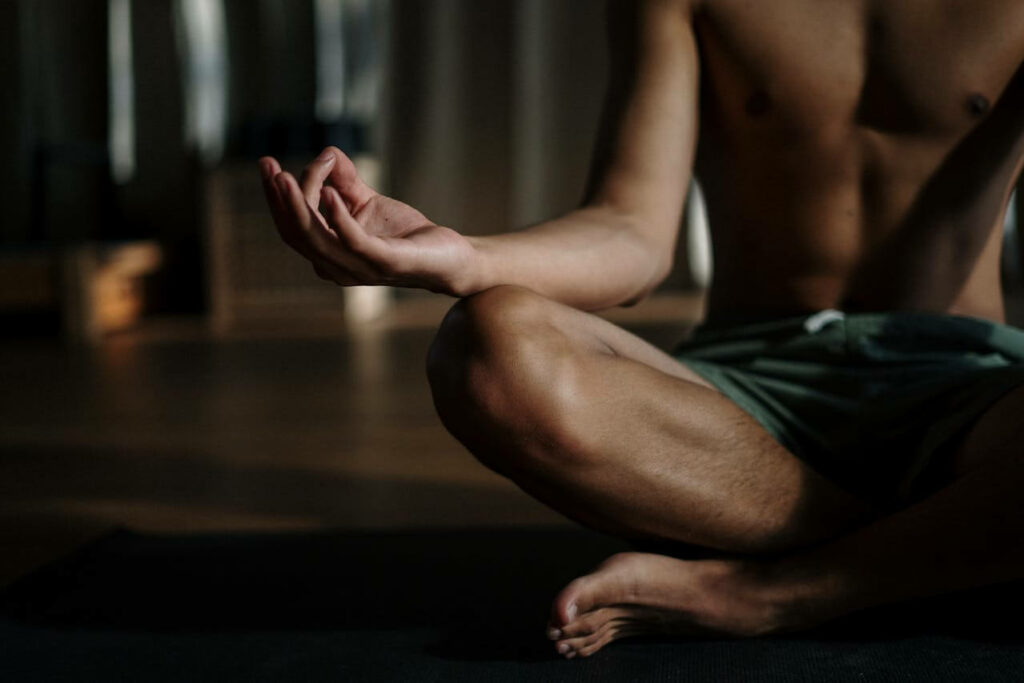
The Science-Backed Benefits of Meditation for Happiness
Mental and Emotional Benefits
Research consistently shows that meditation offers profound benefits for mental health and emotional well-being. When you learn how to meditate properly, you’re essentially rewiring your brain for happiness. Studies reveal that we play our negative subconscious programs for approximately 95% of the day, which explains why learning how to control thoughts through meditation is so crucial.
Meditation directly addresses mind-wandering and overthinking – two of the biggest sources of unhappiness, according to psychological research. Our ability to focus and avoid mind-wandering represents one of four independent brain circuits that influence lasting well-being, as defined by Davidson’s research on contemplative neuroscience. The other three brain circuits that influence our lasting well-being are our ability to be generous, our ability to maintain positive states, and our ability to recover from negative states.
Regular meditation practice develops what we call “mental immunity” – the ability to recognize negative thought patterns before they spiral out of control. This skill becomes invaluable in daily life, allowing you to nip negative thoughts in the bud and consciously choose happier, more constructive thinking patterns.
Physical and Neurological Benefits
The physical benefits of meditation are equally impressive. Regular practice blocks cortisol and other stress hormones, which directly impacts your body’s stress response system. This hormonal regulation strengthens your immune system, making you more resilient to illness and fatigue.
Meditation also changes your brain structure. Neuroimaging studies show that consistent practice increases gray matter in areas associated with emotional regulation, empathy, and cognitive flexibility. These physical brain changes explain why meditation for happiness produces lasting results rather than temporary mood boosts.
Perhaps most fascinating is how meditation slows brain waves from beta (thinking) to alpha (calm) or even theta (deep meditation) states. This shift can stimulate stem cell production, which is vital for healing and cellular repair throughout your body.
The Four Mind Muscles
When you learn how to meditate, you’re actually training four distinct mental muscles that contribute to overall happiness and well-being:
Concentration involves holding your attention on your chosen focus point. Each time your mind wanders and you bring it back, you’re strengthening this muscle. Concentration isn’t about rigid focus – it’s about gentle, sustained attention.
Clarity represents your ability to notice when your mind has wandered. This awareness is crucial because you can’t redirect your attention if you don’t realize it’s drifted. Developing clarity helps you become more self-aware in daily life.
Equanimity is your capacity to stay open and accepting of whatever arises during meditation. Instead of fighting distracting thoughts or sounds, you learn to accept them without resistance. This muscle helps you remain calm during life’s inevitable challenges.
Friendliness involves treating yourself with kindness during meditation. When you notice your mind wandering, responding with self-compassion rather than self-criticism strengthens this muscle and extends into how you treat yourself throughout the day.

How to Control Thoughts: A Comprehensive Guide
Learning how to be happy starts with learning how to control thoughts. As such, let’s dive deeper into how the practice of meditation and other techniques can help you achieve this goal.
The Meditation Approach
Learning how to control thoughts begins with understanding that you’re not trying to stop thinking entirely. Instead, you’re learning to change your relationship with your thoughts. When you learn how to meditate properly, you develop the skill of observing thoughts without being controlled by them.
The key is recognizing that thoughts are like clouds passing through the sky of your consciousness. They come and go naturally. Your job isn’t to chase them away but to remain anchored in your chosen point of focus, whether that’s your breath, a body sensation, or a mantra.
Start by noticing when negative thoughts arise. This awareness alone diminishes their power over you. Then, gently redirect your attention to something positive or neutral. This process of noticing and redirecting becomes easier with practice, eventually becoming automatic.
Additional Thought Control Techniques
Beyond meditation, several other techniques can help you learn how to control thoughts effectively. Cognitive reframing involves consciously challenging negative thoughts and replacing them with more balanced perspectives. When you catch yourself thinking “I always mess up,” you might reframe it as “I made a mistake, and I can learn from this experience.”
Mindfulness throughout the day extends your meditation practice beyond formal sitting sessions. By staying present and aware of your thoughts during daily activities, you strengthen your ability to notice and redirect negative thinking patterns as they arise.
Gratitude practice also supports thought control by training your mind to focus on the positive aspects of your experience. Regular gratitude exercises literally rewire your brain to notice and appreciate good things more readily. Learn more about gratitude for happiness.

Types of Meditation: Finding Your Perfect Practice
Before we dive into this week’s challenge, it’s important to learn how to meditate properly. One of the ways to do so is to become familiar with the many different types of meditation, try them, and choose which one best fits your needs.
Breath Awareness Meditation
Breath awareness meditation forms the foundation of learning how to meditate properly. This practice involves focusing your attention on your natural breathing rhythm while gently ignoring other thoughts. Some variations include counting breaths, which can be particularly helpful for beginners.
This technique is excellent for reducing anxiety and improving concentration. The breath serves as an always-available anchor for your attention, making this type of meditation for happiness accessible anywhere, anytime.
To practice breath awareness, simply sit comfortably and observe your breath without trying to change it. When thoughts arise, acknowledge them briefly and return your attention to breathing. This simple practice can profoundly impact your ability to find calm in stressful situations.
Loving-Kindness (Metta) Meditation
Loving-kindness meditation focuses on cultivating and extending feelings of love and compassion to yourself and others. This practice begins by thinking of someone you love deeply, then gradually expanding that feeling to include yourself, difficult people in your life, and eventually all beings everywhere.
Research shows this type of meditation increases positive emotions, promotes social connection, and reduces depression, anxiety, and PTSD symptoms. It’s particularly effective for those seeking to improve relationships and develop greater emotional resilience.
During loving-kindness practice, you might repeat phrases like “May I be happy and healthy” or “May all beings be free from suffering.” This repetition helps train your mind to default to compassionate thoughts rather than self-criticism or judgment.
Body Scan and Progressive Relaxation
Body scan meditation involves systematically focusing attention on different parts of your body, usually starting from your toes and moving upward to your head. This practice helps you notice and release physical tension while developing greater body awareness.
This technique is particularly beneficial for those dealing with chronic pain, insomnia, or high stress levels. By learning to consciously relax each part of your body, you develop a powerful tool for managing physical symptoms of stress and anxiety.
Progressive relaxation combines body scanning with deliberate muscle tensing and releasing. You might tense your foot muscles for five seconds, then release and notice the sensation of relaxation that follows.
Mindfulness Meditation
Mindfulness meditation teaches you to stay present and aware of the current moment without judgment. This practice can be done anywhere and involves calmly noticing your surroundings, including sights, sounds, smells, the taste in your mouth, and physical sensations.
This type of meditation for happiness is particularly effective for reducing the fixation on negative emotions and improving relationship satisfaction. By staying present rather than getting lost in past regrets or future worries, you naturally experience more contentment and peace.
Mindfulness meditation can be formal (sitting in designated practice time) or informal (bringing mindful awareness to daily activities like eating, walking, or even washing dishes). Both approaches contribute to overall well-being and happiness. Learn more about mindfulness for happiness.
Specialized Meditation Practices
Kundalini yoga combines physical movement, deep breathing, and mantras. This dynamic practice has been shown to improve physical strength and energy while boosting mental health and reducing chronic pain.
Zen meditation emphasizes finding a comfortable position, focusing on breathing, and mindfully observing thoughts without judgment. Practitioners often use this approach for both relaxation and spiritual development.
Transcendental meditation involves sitting quietly, breathing slowly, and focusing on a personalized mantra to transcend ordinary thinking and reach deeper states of consciousness.
Vipassana meditation enables practitioners to access internal wisdom and see the world more calmly. This practice teaches you to slow down your mind and observe it clearly, leading to better life decisions and increased joy.
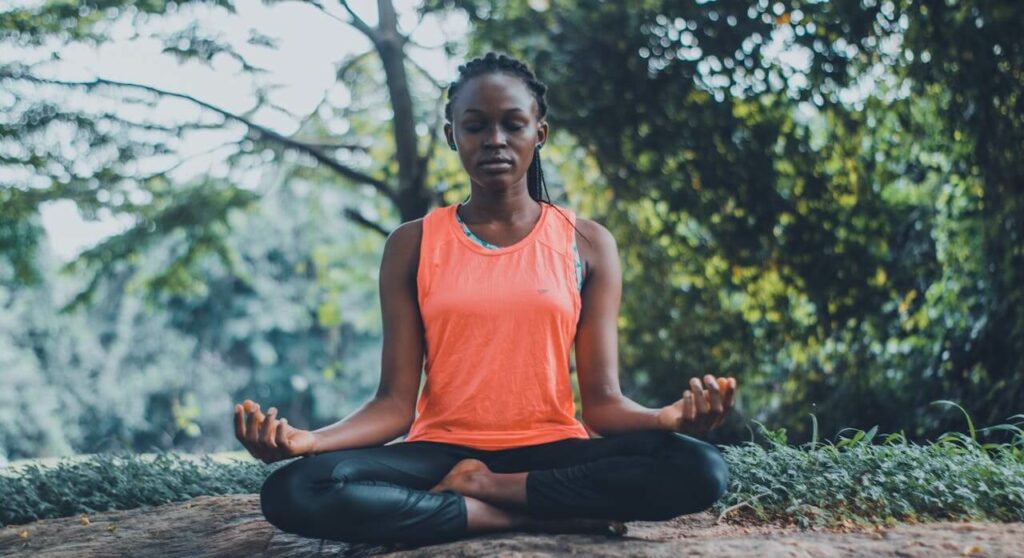
This Week’s Meditation Challenge
Your challenge this week is simple yet transformative: commit to meditating for at least 10 minutes daily. This might seem like a small commitment, but consistency matters more than duration when trying to learn how to meditate properly.
Choose a specific time each day for your practice. Many people find morning meditation sets a positive tone for the entire day, while others prefer evening sessions to unwind and process the day’s experiences. Experiment to find what works best for your schedule and temperament.
Create a dedicated meditation space, even if it’s just a corner of your bedroom with a comfortable cushion. Having a designated spot helps establish the ritual and makes it easier to maintain your practice long-term. You can start with our free guided meditation for happiness and well-being.
Deep Dive: Learn How to Meditate Properly
Setting Up Your Practice
Learning how to meditate properly begins with creating the right environment and mindset. Find a quiet space where you won’t be disturbed. This might mean turning off your phone, informing family members of your practice time, or even using a “Do Not Disturb” sign.
Sit comfortably with your spine upright. You can use a chair, cushion, or meditation bench, whatever supports good posture without causing discomfort. While lying down is possible, sitting helps maintain alertness and prevents you from falling asleep during practice.
Close your eyes or soften your gaze downward to minimize visual distractions. Take three deep breaths to signal to your nervous system that it’s time to slow down and turn inward.
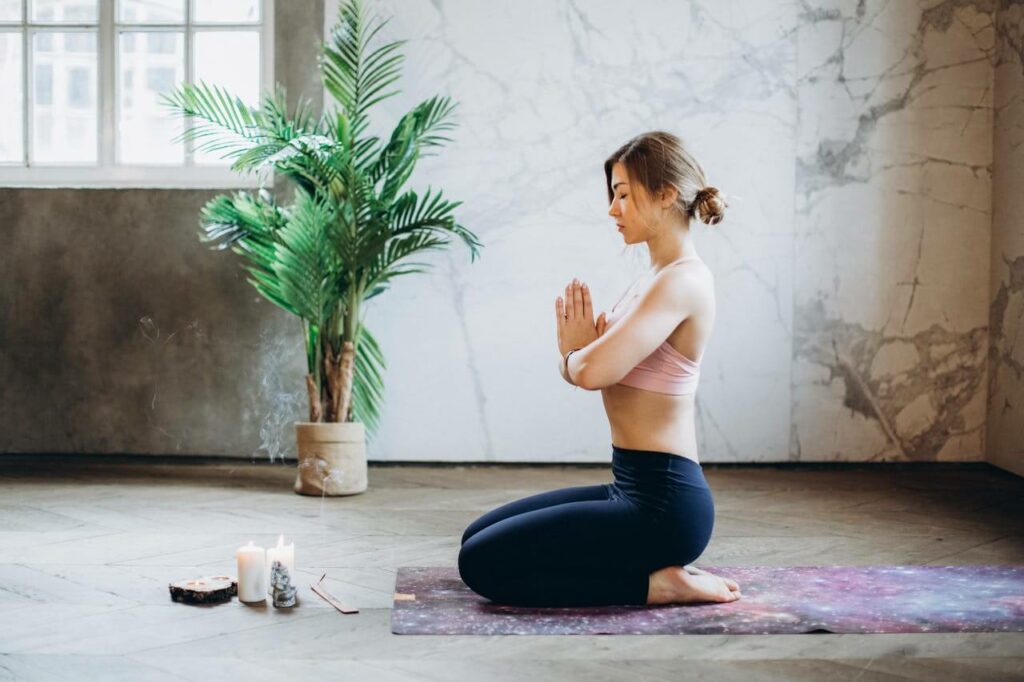
The Practice Itself
Begin by selecting your focus point. This might be your breath, a body sensation, or a simple mantra. If you’re new to meditation, breath awareness often works best because breathing is automatic and always available.
As you focus on your chosen anchor, thoughts will inevitably arise. This is completely normal and doesn’t mean you’re “bad” at meditation. The practice isn’t about having no thoughts. Instead, it’s about noticing when thoughts arise and gently returning your attention to your focus point.
Treat your wandering mind with the same kindness you’d show a beloved friend. Instead of criticizing yourself for losing focus, simply acknowledge that thinking happened and redirect your attention. This gentle approach strengthens your friendliness muscle while making meditation more enjoyable.
Overcoming Common Challenges
Many beginners worry they’re not meditating “correctly” because their minds feel busy or distracted. Remember that noticing a busy mind is the practice. You’re developing clarity by becoming aware of your mental activity.
If you feel restless or uncomfortable, try starting with shorter sessions and gradually increasing the duration. Five minutes of consistent daily practice is more beneficial than 30 minutes once a week.
Some people experience emotional releases during meditation. If sadness, anger, or other strong emotions arise, continue breathing and observe these feelings with compassion. Meditation creates space for suppressed emotions to surface and heal.
Making It Sustainable
The key to long-term success with meditation for happiness lies in making the practice enjoyable and sustainable. Experiment with different types of meditation to find what resonates with you. Some people love the structure of guided meditations, while others prefer silent practice.
Consider using free guided meditation for happiness and well-being resources when you’re starting out. These can provide structure and inspiration while you develop your own practice. Many apps and online resources offer free guided meditation for happiness and well-being sessions designed specifically for beginners.
Track your progress by keeping a simple meditation journal. Note how you feel before and after each session, any insights that arise, or improvements in your daily life. This record helps maintain motivation and shows the gradual benefits accumulating over time.
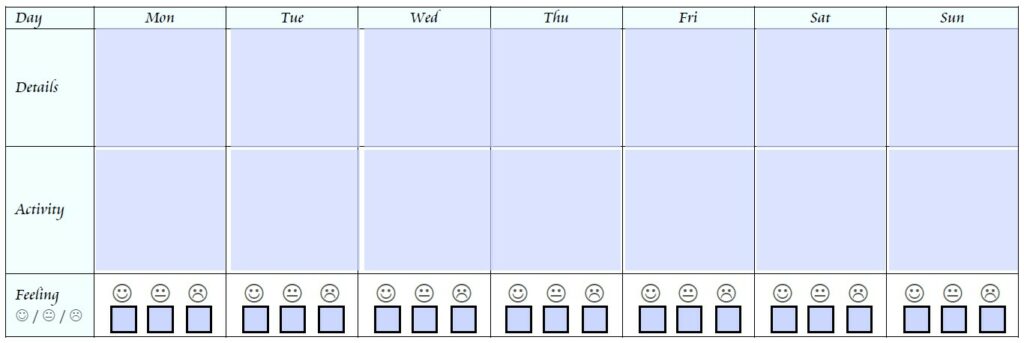
Integration: How to Meditate Properly and Bring Meditation into Daily Life
Micro-Meditations Throughout Your Day
You don’t need to limit meditation to formal sitting sessions. Learning how to be happy often involves integrating mindfulness practices throughout your day. Take three conscious breaths before important meetings, practice mindful eating during lunch, or do a brief body scan while waiting in line.
These micro-meditations help bridge the gap between formal practice and daily life. They reinforce the mental muscles you’re developing during longer sessions while providing immediate stress relief and clarity when you need it most.
Walking meditation offers another way to practice mindfulness while moving through your day. Simply pay attention to the sensations of walking – the feeling of your feet touching the ground, the rhythm of your steps, the movement of air around your body.
Dealing with Difficult Emotions
As you develop your meditation practice, you’ll become more skilled at noticing emotions as they arise. Instead of being overwhelmed by anger, sadness, or anxiety, you’ll learn to observe these feelings with curiosity and compassion.
This emotional awareness is crucial for learning how to be happy because it allows you to respond to challenging situations rather than react automatically. When you notice anger building, you can take a few conscious breaths before speaking. When anxiety arises, you can acknowledge it without being consumed by worry.
Remember that meditation doesn’t eliminate difficult emotions. Instead, it changes your relationship with them. You’ll still experience the full range of human feelings, but you’ll have more choice in how you respond to them.
Building Long-Term Resilience
Consistent meditation practice builds what researchers call “resilience reserves” – your capacity to bounce back from stress, adversity, and life’s inevitable challenges. This resilience comes from strengthening your mental muscles through regular practice.
Over time, you’ll notice that situations that once triggered strong emotional reactions feel more manageable. You’ll have greater access to calm, clear-thinking states even during difficult circumstances. This is the true gift of learning how to control thoughts through meditation.
The benefits extend beyond personal well-being to improve your relationships, work performance, and overall life satisfaction. As you become more centered and peaceful, you naturally contribute to a more positive environment for everyone around you.
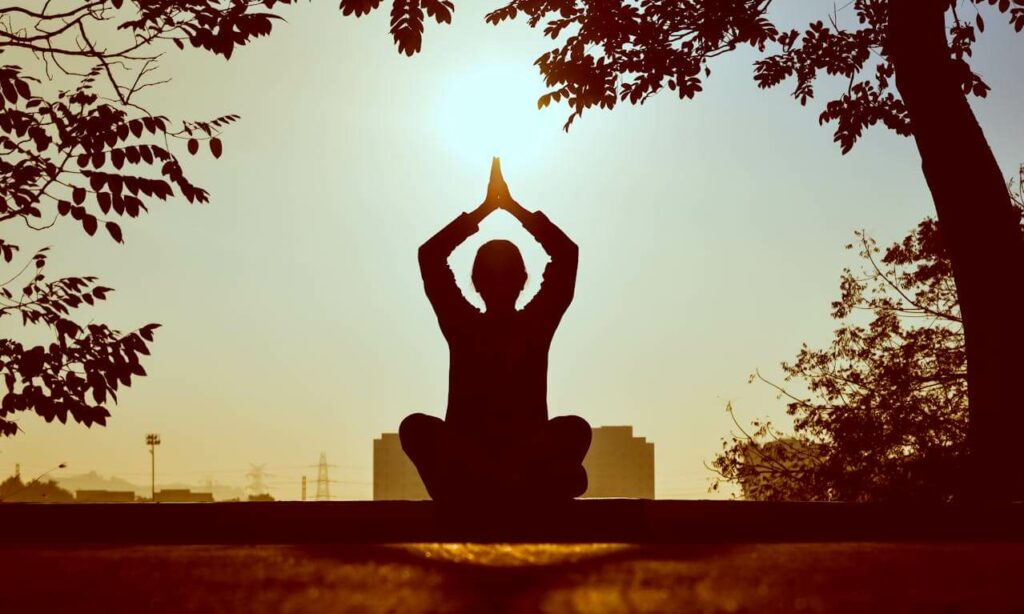
Conclusion: Your Journey to Lasting Happiness
If you’re wondering how to be happy, start small – with a short daily meditation. Learning how to meditate properly isn’t just about sitting quietly for a few minutes each day. It’s about fundamentally transforming your relationship with your thoughts, emotions, and life experiences. Through consistent practice of meditation for happiness, you develop the ability to find peace and contentment regardless of external circumstances.
The journey begins with a single breath, a moment of awareness, a choice to turn inward rather than remain caught in the endless cycle of mental chatter. As you continue practicing, you’ll discover that happiness isn’t something you need to chase or achieve. It’s something you can cultivate and access within yourself at any moment.
Remember that meditation is a practice, not a performance. Some days will feel easier than others, and that’s perfectly normal. What matters is showing up consistently, treating yourself with kindness, and trusting in the process. The benefits accumulate gradually, like drops of water eventually filling a bucket.
Your mind is incredibly powerful, and learning how to control thoughts through meditation gives you access to that power in service of your well-being and happiness. As Marcus Aurelius wisely observed, “The happiness of your life depends upon the quality of your thoughts.” Through meditation, you’re not just improving the quality of your thoughts. You’re also reclaiming the director’s chair of your mental experience.
4HappyU and Your Free Guided Meditation for Happiness and Well-being
If you’re ready to discover how to be happy and deepen your journey toward lasting well-being, consider working with a qualified coach who can provide personalized guidance and support. Professional coaching can help you develop a sustainable meditation practice while addressing any specific challenges or goals you may have.
To ease into the practice and develop a habit of meditating daily, download our free Guided Meditation for Happiness and Well-being. To get the meditation, simply contact us, and we will send you a link for your free Guided Meditation for Happiness and Well-being.
Start where you are, with what you have, for as long as you can manage. Your future self will thank you for taking this first step toward a calmer, happier, more peaceful way of being in the world.
Resources
The information in this article is grounded in scientific research. If you’re interested in specific studies, feel free to reach out to us.
For daily doses of joy, positivity, inspiration, and motivation, be sure to follow us on Instagram.
Za naše bralce v Sloveniji
Če vas zanima več o psihoterapiji in iskanju trajne sreče, preberite naslednje članke: Psihoterapija Obala, 5 ključev do trajne sreče in notranjega miru, Najboljši psihoterapevti v Sloveniji: Kako se hitro spopasti s stresom, Psiholog v Kopru: Kako odpraviti težave s psihoterapijo in RTT terapijo, in Psihoterapija Online: Prednosti in učinkovitost terapije na daljavo.


